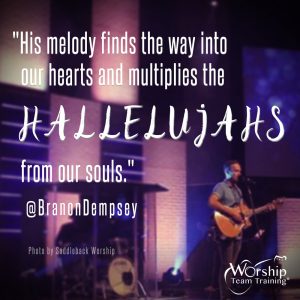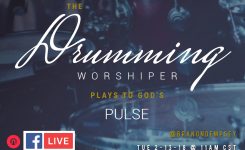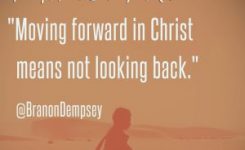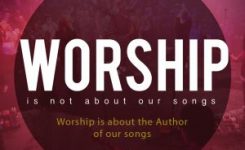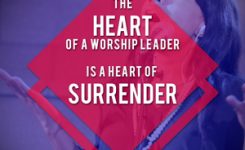Band, Leaders, Players, Worship Leading
Multiply the Sound of Your Band (#Show 77)
3.5 min read
The Sound of Oneness
As a worship leader or instrumentalist, if there was one thing you had to change about your band, what would it be? Some may even find it hard to simplify their needs into one single answer, while others may have a myrid of responses.When you think about your drummer, bassist, guitarist, pianists and other musicians, you also think about their differences in sound and quality.
How can you unify them all together, through the process of multiplication? Printmaking, an art form consisting of the production of images, usually on paper, fabric, wood, metal and other surfaces. Prints are created by transferring ink from a matrix or through a prepared screen, then applied to the material surface.
The result is producing the same image, but through the process of multiplication, each copy has its unique characteristics, yet possess the same form as the original. Music making (as a band) is very similar.
“His melody finds the way into our hearts and multiplies the hallelujahs from our souls.” @BranonDempsey
WATCH SHOW #77
Multiplication through music As said in our Weekend Workshops: when it comes to your band, don’t look at what you don’t have, look at what you do have. Work with the instruments and voices that you got. With a little inspiration and creativity, you can multiply the sound of your band.
Let’s use the idea of printmaking for this example: Take one part from the music (played or sung), and add another instrument or voice to the mix. Each sound has it’s own color, quality, tone and contrast to the original – through the process of multiplication.
“Multiplied” Song Study in two ways Today we are breaking-down the song “Multiplied” as performed by North Point ft. Steve Fee. Words and Music by Bear Rineheart and Bo Rineheart. Copyright 2013 Bear Lee Breathing Music/NeedToBreathe Music. Get the music on GuideTracks.co We will look at two different options in how your band can produce the song.
The song is very simple; the lyrics are easy to grab and the chord changes are familiar. If you think of this song in a hymn-like Mumford and Sons form, then you are good to go.
Option One to Play Multiplied (by recording)
Focus: strong quarter-beat (four on the floor) emphasis, with guitar textures on top. Notice how they keep the instruments just under the vocal line to make a solid foundation. The verse is quick as the Chorus rolls right in naturally as a refrain. Multiplied is a very rhythmically intense tune. The challenge is keeping good time and consistency between the drums and guitars.
Dynamics are also a must, in producing smooth volumes. Listening, timing and precision in necessary to unify the group. Key – G (VERSE-1) G C Your love is like radiant diamonds G D Bursting in-side us we cannot contain Em C Your love will surely come find us G D G Like blazin’ wildfires … singing Your name Parts: You have the initial start of the electric guitar on delay effect (dotted 8ths and 16ths combo.) By adding two electric guitars you can double the parts to create a very interesting rhythm combination.
Caution: each player needs to be grounded to a click, counting and subdividing the beat for clean rhythms. Drums enter at the same time in a military march 16th note feel on the snare (deep snare / tuned low). Also, add-in another percussionist on a low tom – playing the same snare pattern – in unison. Like the guitarists, also locked in to the click and each other. The bass guitar simply holds the line down, anchoring the guitar and drums together.
By pulsing the note in time, the bass acts like glue to unify the 16th note rhythms. The vocal enters in Verse 1, but watch what happens in the rhythm section, each instrument controls their dynamic, making the sound as a whole unified and under-volume. It’s very easy to have the band take off in this section, but when they do, the sound can become too strong and will overwhelm the vocals. The rhythm section’s job is to hold back and have good restrain on the texture.
First and Second Chorus Sections The chorus flows right in after the verse. Again, it’s a hymn like verse/refrain quality. Easy and very fun to play. The first and second chorus sections are strung together without any break. They both flow together in a fantastic succession of praise. (CHORUS-1) G C God of mercy sweet love of mine G D I have surrendered to Your design Em C May this offering stretch across the skies G D G These hallelujahs … be multiplied
Second Chorus: As soon as you move through the first chorus, you also flow right into a chant like section “Hallelujah” acting as a stand-alone Second Chorus. Em C Hallelujah … Hallelujah … G D Hallelujah … Em C Hallelujah … Hallelujah … G D G Halle – lujah …
Optional Key (Female Leaders) – E (VERSE-1) E A Your love is like radiant diamonds E B Bursting in-side us we cannot contain C#m A Your love will surely come find us E B E Like blazin’ wildfires … singing Your name (CHORUS-1) E A God of mercy sweet love of mine E B I have surrendered to Your design C#m A May this offering stretch across the skies E B E These hallelujahs … be multiplied C#m A Hallelujah … Hallelujah … E B Hallelujah … C#m A Hallelujah … Hallelujah … E B E Halle – lujah …
Option Two to Play Multiplied (on your own)
HOW do you produce this sound without the luxuries of stellar guitar players, drummers and loops? Just keep to the basics.Work with the band you have, not with the band you don’t have.
Drummer: play the 16th pattern on the snare or low tom (edge of the head), keep the volume controlled and low. Bass guitar will play 8th note pulse – also controlled and locked into the drums as one unit.
Guitars: If you have an electric guitarist that knows how to properly play in a delayed pattern great, If not, don’t force it. Let the drums and bass keep this section clean. Guitars can easily play 8th note mutes (electric and acoustics), similar to the bass guitar pattern. The idea is to keep all rhythms unified and consistent
Piano: sustained whole notes, every two bars. Keep the chords simple, no filler notes, just long and open sounds, This will add harmonic support to what is happening in the drum and bass section.
The challenge in multiplying your sound: keep each part consistent and simple. Less is more approach. Layering one instrument at a time, until you have a multiplied sound. Each one is doing their part independently. Keep your part smooth and locked in – undistracted Together, move your part into the whole-ness of the sound – unifying the band. Before you know it, each part will cause the sound of your band to multiply. Key – G (VERSE-1) Option B. G C Your love is like radiant diamonds G D Bursting in-side us we cannot contain Em C Your love will surely come find us G D G Like blazin’ wildfires … singing Your name (CHORUS-1) G C God of mercy sweet love of mine G D I have surrendered to Your design Em C May this offering stretch across the skies G D G These hallelujahs … be multiplied Second Chorus: Em C Hallelujah … Hallelujah … G D Hallelujah … Em C Hallelujah … Hallelujah … G D G Halle – lujah …
Recap the whole idea:
There you have it, two ways to play the song “Multiplied” both by recording example and on your own. Multiplying your band’s sound is an awesome, yet challenging process. Good technique, precision and approach is involved to keep each sound consistent, as you build parts to make a combined whole. There’s more to your band instead of increasing the volume to form energy. It’s about creating individual parts and how each of those parts become a collective whole. The idea is to form a oneness of sound, all birthed from the one original voice. The result is multiplication through music, just like the art-form in printmaking. Let God speak into your music, multiply your “Hallelujahs” to impact your church’s worship by the creativity of your band. As we grow in Christ through the multiplication of wisdom and kindness, let us do the same through our music making:
“and to knowledge, self-control; and to self-control, perseverance; and to perseverance, godliness; 7and to godliness, brotherly kindness; and to brotherly kindness, love. For if you possess these qualities and continue to grow in them, they will keep you from being ineffective and unproductive in your knowledge of our Lord Jesus Christ.” – 2 Peter 1.7-8
@BranonDempsey @worshiptt
Invite Branon Dempsey / Worship Team Training for a customized training Live Online Video or Live In-Person Event at your church. We Come To You!
Discover what a Weekend Workshop of Hands-on practical instruction can do for you! Copyright 2016 Worship Team Training®


